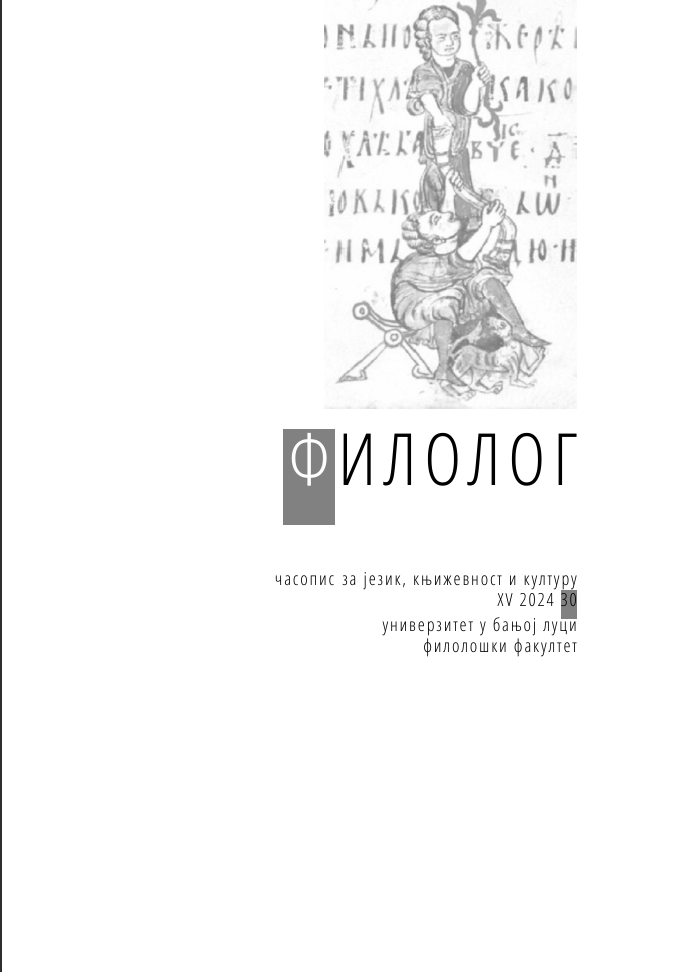Machine Translation in German Language Teaching and Learning: A Survey of Use and Views Among University Students
DOI:
https://doi.org/10.21618/fil2430248tKeywords:
machine translation, AI tools, Google Translate, ChatGPT, German as a foreign languageAbstract
The use of machine translation is becoming increasingly popular among language learners. Artificial intelligence tools, such as the online service Google Tranlate and the chatbot ChatGPT have the potencial to transform language teaching and learning. This paper examines how students use machine translation and their attitudes towards the application of these tools in the teaching and learning of German language. The participants of this study were students from the Faculty of Philosophy in Niš who are learning German as a foreign language at levels A2.1 and B1.1. The objectives of this research are to gain fundamental insights into the use of machine translation in teaching German at the tertiary level, to provide guidelines for further research and discussion, and to offer practical advice for German language instruction. The results confirm the assumptions that students use machine translation and have positive attitudes towards its application. Respondents mainly use these tools as dictionaries, but also for checking and correcting independently written texts and for writing assignments. Almost all students believe that these tools aid in learning German, and the majority of students state that they should be used in German language teaching and learning.
References
Anastasiou, D. (2010) Idiom treatment experiments in machine translation. Newcastle upon tyne, Cambridge Scholars Publishing.
Anderson, D. D. (1995) Machine translation as a tool in second language learning. CALICO Journal. XIII (1), 68–97.
Atlas, S. (2023) ChatGPT for higher education and professional development: A guide to conversational AI. University of Rhode Island.
Belam, J. (2003) Buying up to falling down: A deductive approach to teaching postediting. In: MT Summit IX Workshop on Teaching Translation Technologies and Tools. New Orleans, USA, pp. 1–10.
Chen, W. Y. (2020) Using Google Translate in an authentic translation task: The process, refinement efforts, and students’ perceptions. Current Trends in Translation Teaching & Learning E. VII, 213–238.
Clifford, J., Merschel L., & Munné J. (2013) Surveying the landscape: What is the role of machine translation in language learning?. @ tic. revista d’innovació educativa. X, 108–121.
Correa, M. (2011) Academic dishonesty in the second language classroom: Instructors’ perspectives. Modern Journal of Language Teaching Methods. I, 65–79.
Correa, M. (2014) Leaving the “peer” out of peer-editing: Online translators as a pedagogical tool in the Spanish as a second language classroom. Latin American Journal of Content and Language Integrated Learning (LACLIL). VII(1), 1–20.
Ducar, C. & Schocket, D. H. (2018) Machine translation and the L2 classroom: Pedagogical solutions for making peace with Google translate. Foreign Language Annals. LI(4), 779–795.
Enríquez Raído, V. & Sánchez Torrón, M. (2020) Machine translation, language learning and the ‘knowledge economy.’. In: Filimowicz, M. & Tzankova, V. (eds.) Reimagining communication: Action. Taylor and Francis, Routledge, pp. 155–171.
Eriksson, N. L. (2021) Google Translate in English Language Learning: A Study of Teachers' Beliefs and Practices. [Unpublished master’s thesis]. Dalarna University.
Farzi, R. (2016) Taming translation technology for L2 writing: Documenting the use of free online translation tools by ESL students in a writing course. [Unpublished doctoral dissertation]. University of Ottawa.
Harris, H. (2010) Machine translations revisited: issues and treatment protocol. The language teacher. XXXIV(3), 25–29.
Hutchins, W. J. (2010) Machine translation: A concise history. Journal of Translation Studies, XIV(1-2), 29–70.
Jolley, J. R. & Maimone, L. (2015) Free online machine translation: Use and perceptions by Spanish students and instructors. In: Moeller, A. J. (eds.) Learn languages, explore cultures, transform lives, pp. 181–200.
Jolley, J. R. & Maimone, L. (2022) Thirty years of machine translation in language teaching and learning: A review of the literature. L2 Journal. XIV(1), 26–44.
Kahlon, N. K. & Singh, W. (2021) Machine translation from text to sign language: a systematic review. Universal Access in the Information Society. XXII(1), 1–35.
Kuleto, V., Mihoreanu L., & Dinu D. G. (2023) Eksploatacija veštačke inteligencije u visokom obrazovanju: Uloga ChatGPT-ja prema Uneskovom izveštaju. InspirED Teachers' Voice. MMXXIII(1), 26–32.
Krenz, M. & Ramlow, M. (2008) Maschinelle Übersetzung und XML im Übersetzungsprozess: Prozesse der Translation und Lokalisierung im Wandel. Zwei Beiträge, hg. von Uta Seewald-Heeg. Berlin, Frank & Timme GmbH.
Lee, S. M. (2019) The impact of using machine translation on EFL students’ writing. Computer assisted language learning. XXXIII(3), 157–175.
Malmström, H., Stöhr C. & Ou A. W. (2023) Chatbots and other AI for learning: A survey of use and views among university students in Sweden. Chalmers Studies in Communication and Learning in Higher Education, I.
Niño, A. (2008) Evaluating the use of machine translation post-editing in the foreign language class. Computer Assisted Language Learning. XXI(1), 29–49.
Niño, A. (2009) Machine translation in foreign language learning: Language learners’ and tutors’ perceptions of its advantages and disadvantages. ReCALL. XXI(2), 241–258.
Niño, A. (2020) Exploring the use of online machine translation for independent language learning. Research in Learning Technology, XXVIII.
Richmond, I. M. (1994) Doing it backwards: Using translation software to teach target-language grammaticality. Computer Assisted Language Learning. VII(1), 65–78.
Schwanke, M. (1991) Maschinelle Übersetzung. Ein Überblick über Theorie und Praxis. Berlin, Springer Verlag.
Somers, H. (2003) Machine translation in the classroom. In: Somers, H. (eds.) Computers and Translation. A translator’s guide, Vol. 35, pp. 319–340.
Štajner, S. & Popović, M. (2018) Improving machine translation of English relative clauses with automatic text simplification. In: Jönsson, A. et al. (eds.) Proceedings of the 1st Workshop on Automatic Text Adaptation (ATA). Tilburg, Association for Computational Linguistics, pp. 39–48.
Udry, I. & Berthele, R. (2023) Digitale Übersetzungsprogramme und OnlineWörterbücher im Fremdsprachenunterricht: Erkenntnisse aus einer Umfrage bei Lehrpersonen und Lernenden der obligatorischen, post-obligatorischen und tertiären Bildung. Linguistik online. CXX(2), 145–167.
Werthmann, A. & Witt, A. (2013) Maschinelle Übersetzung–Gegenwart und Perspektiven. In: Stickel, G. (Hrgs.) Translation and interpretation in Europe. Contributions to the annual conference 2013 of EFNIL in Vilnius. Frankfurt am Mein/Berlin/Bern/Bruxelles/New York/Oxford/Wien, Lang, pp. 79–103.
Downloads
Published
How to Cite
Issue
Section
License

This work is licensed under a Creative Commons Attribution-NonCommercial-NoDerivatives 4.0 International License.








